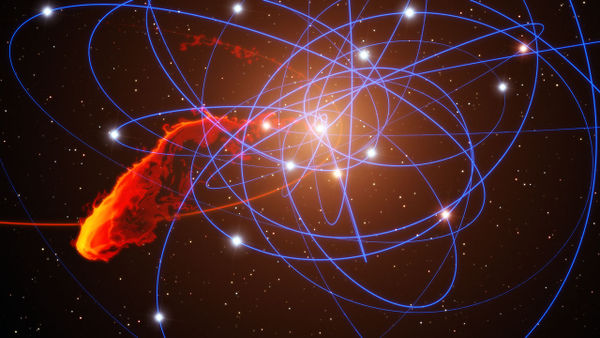Elementary Astronomy News Highlights
Each week in 107-02 we will discuss something interesting that has been in the news. The subjects will be drawn from the New York Times, [http://apod.nasa.gov/apod/ Astronomy Picture of the Day], and press releases from NASA, the European Space Agency, the European Southern Observatory, or the Space Telescope Institute. If there is something interesting from one of our telescopes we may tell you about that too. This page has the highlights.
Week of January 16, 2012
The New York Times and Nature reported the discovery of more planets orbiting two stars. Like the fictional Tatooine of Star Wars there would be two "suns" in its sky. These new discoveries are the size of Saturn, and they are so close to their stars that they are too hot to be habitable.
The first planet found orbiting two stars was Kepler 16. The Kepler telescope finds planets by capturing the moment when they pass between us and their stars, blocking out a tiny fraction of the star's light (often less than 0.1%). By recording these events
Week of January 9, 2012
The science journal Nature reported the discovery made at the Very Large Telescope of the European Southern Observatory of a cloud of gas that is on a trajectory to fall into the million-solar-mass black hole at the center of the Milky Way. Click this link to see what they had to say.You may have to be connected through the University of Louisville's network to read the full article.
A gas cloud has been spotted approaching the Milky Way's central black hole. Observations of its closest approach, expected to occur in mid-2013, may offer insight into the black hole's immediate surroundings.

The discovery was also described in the New York Times with the headline Black Hole Forecast: A Cold Gas Cloud
The center of the Milky Way is a site known as Sagittarius A*, or SgrA* for short. You can watch a short video about this here: